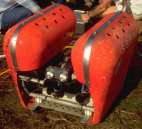MISSION SERRETA - Azores - October 2000 -
SVE - OVGA - CRV-CNRS-INSU
SERRETA OCEANIC VOLCANO
On the 18 th december 1998, fishermen from Terceira island advised local navy authorities that columns of white " smoke " steam were rising from the ocean at a point around 9 km NW the Serreta lighthouse . Local depths was around 500 m and was close a small bank ( Baixa da Serreta) where a submarine eruption took place on June 1867. Most part of the Azorean oceanic eruptions persist around 1-2 weeks and they were of surtseyan type with periods of strong degasing (Capelinhos volcano, at Faial, is a well know exception of around 13 months that has finished as a strombolian cone connected to the main island). The present volcano (that we call Serreta Oceanic Volcano) was still active in March 2000 along NE-SW and NW-SE faults, affecting an area of 2 km length x 0.6 km wide around several vents located 8.5 km NW Serreta lighthouse.
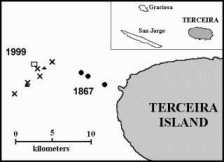

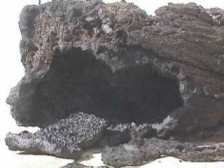
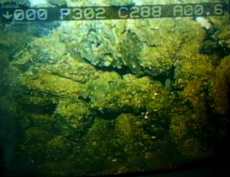
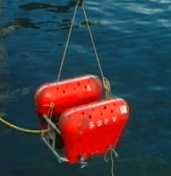
DON JOAO DE CASTRO
Don João de Castro Bank is a large submarine volcano that rises to within 14 m of the sea surface roughly halfway between Terceira and San Miguel Islands. A submarine eruption (with a Volcanic Explosivity Index of 3) during December 1720 produced an ephemeral island that attained a length of 1.5 km and an altitude of about 250 m before it was eroded beneath the sea surface two years later. The submarine volcano has an impressive fumarole field and remains seismically active. The area was charted in 1941.
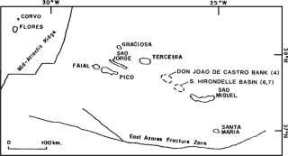
Hydro-acoustic Survey
This acoustic survey campaign was the first carried out on the submarine volcanoes in the audiometric and ultrasonic bands. Hydro-acoustic technic and preliminary results.
ROV technical Specification
Small guided cable submarine --- Spelenaute type Achille - weights : 90 kg - 3 engines ( 2 horizontal; 1 vertical ) 360 W - 2 flooodlights 250 W - 1 depth sensor - 1 mariner's compass - 1digital video camera - Maximum depth : 400 meter - Ideal tool to explore crater lakes - This submarine is available for underwater scientific investigation - Very low cost - For any further details, please contact SVE
